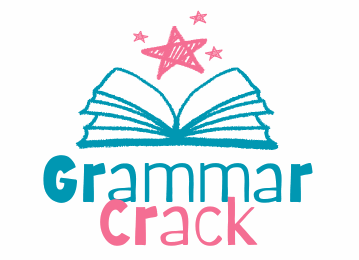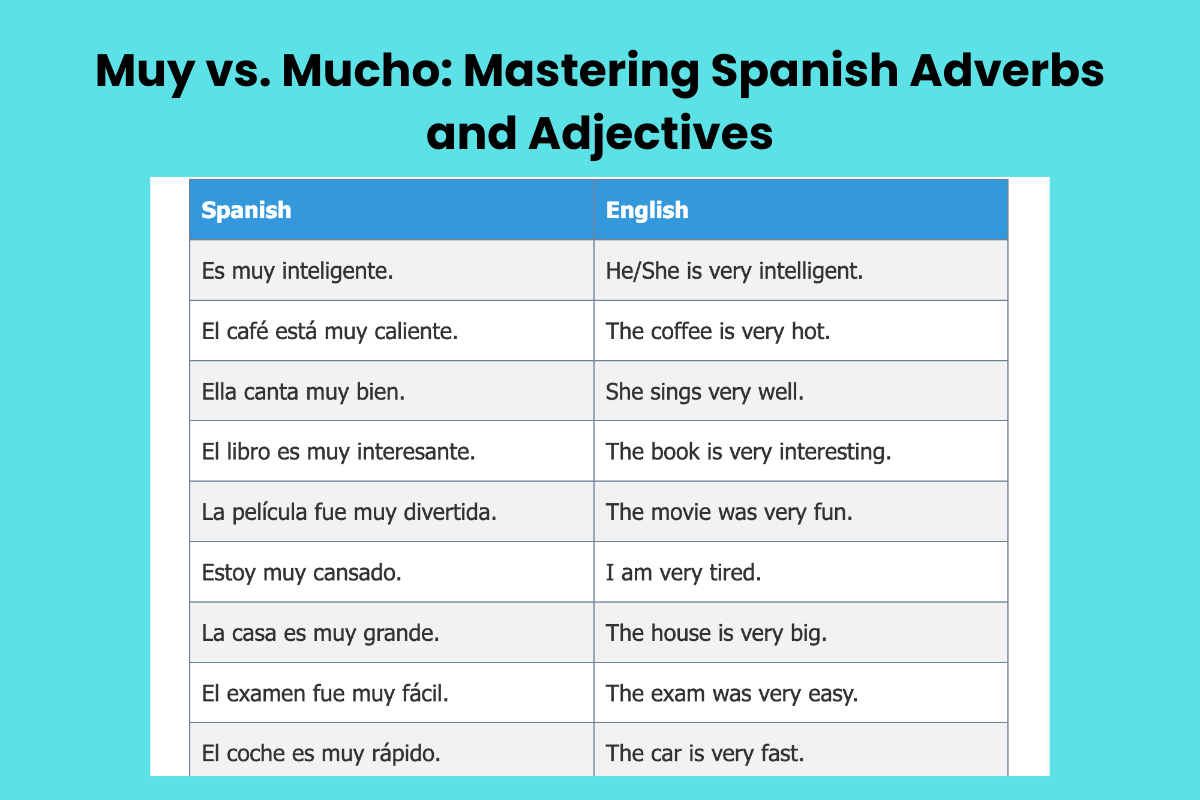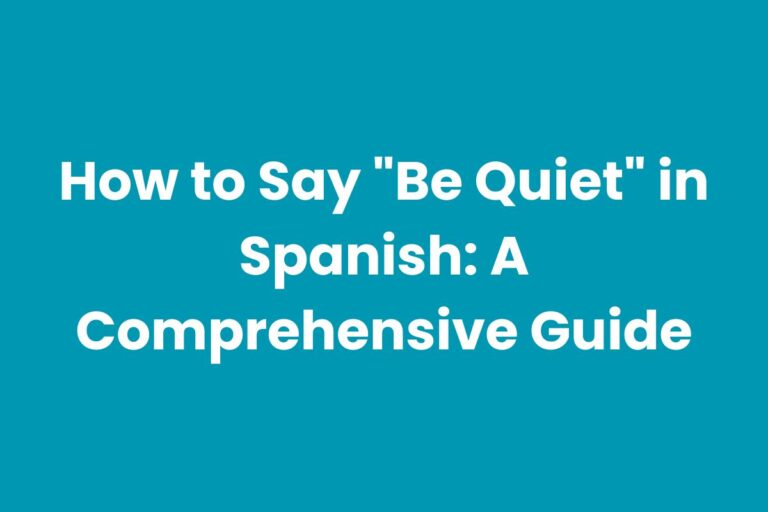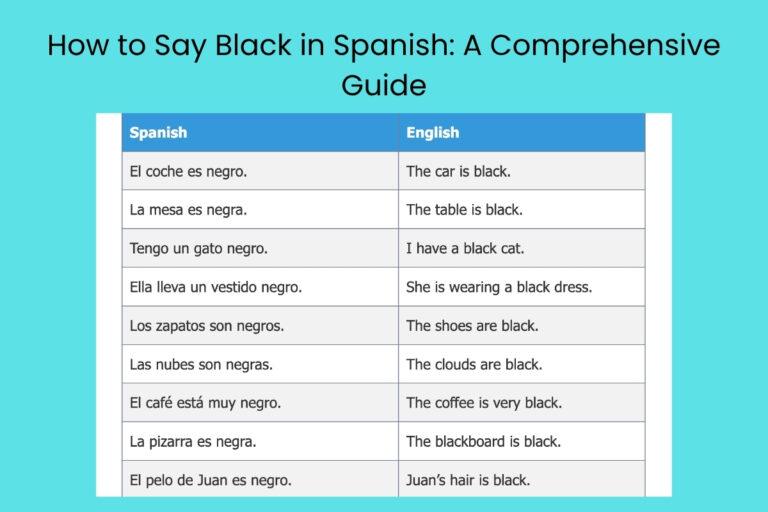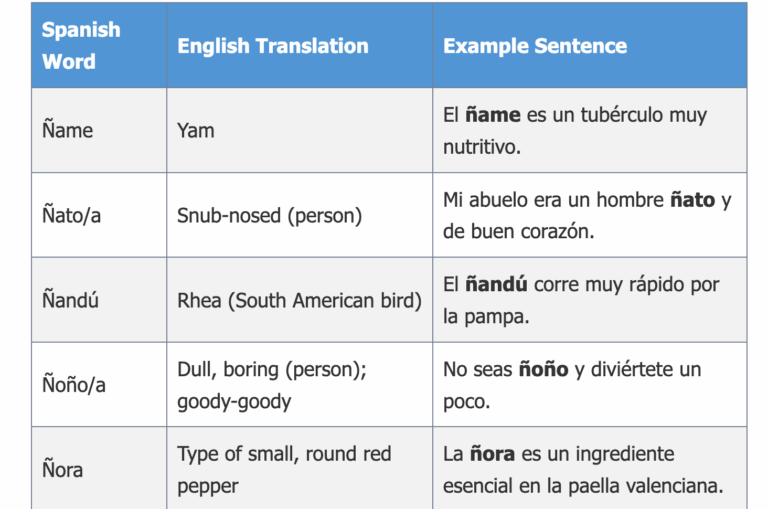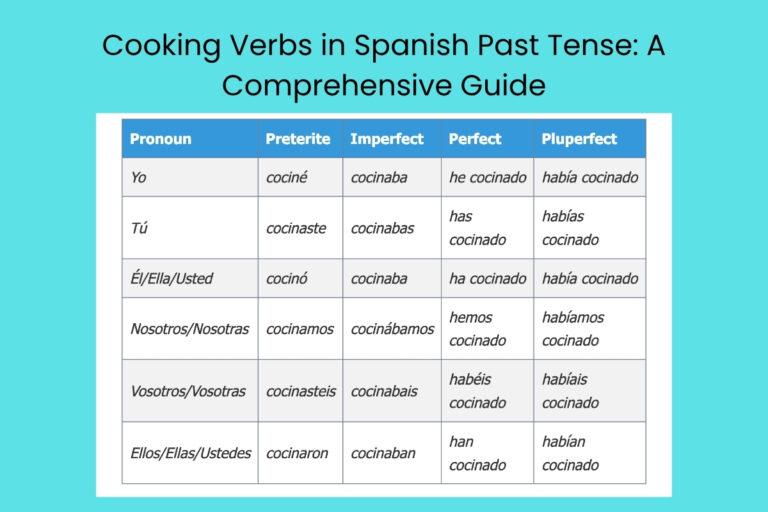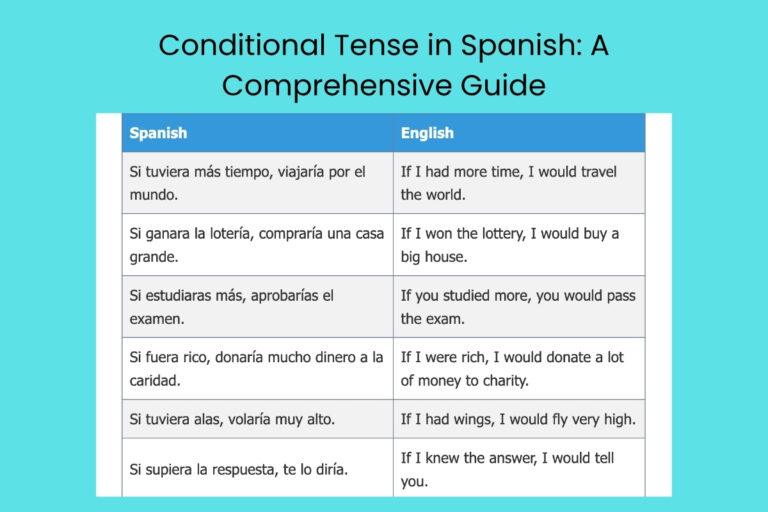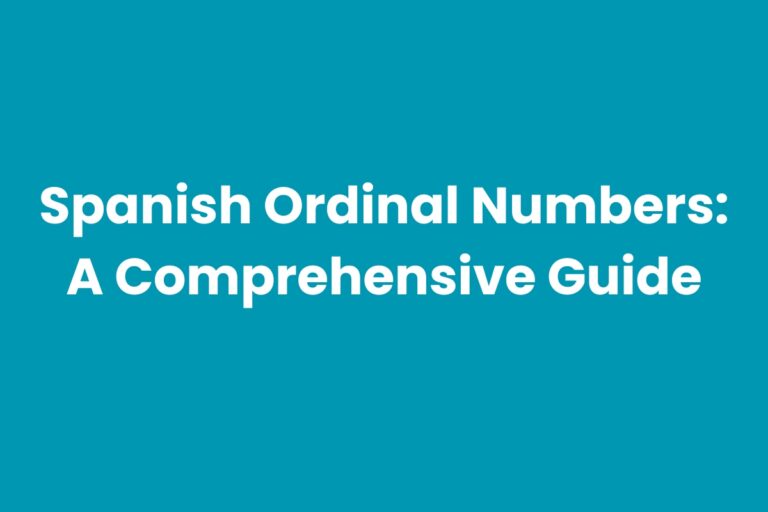Muy vs. Mucho: Mastering Spanish Adverbs and Adjectives
Understanding the difference between muy and mucho is crucial for Spanish learners. These words, both related to quantity or intensity, are used in distinct contexts. Mastering their usage will significantly enhance your fluency and accuracy in Spanish. This article provides a comprehensive guide, breaking down the rules, offering numerous examples, and providing practice exercises to solidify your understanding. Whether you are a beginner or an advanced learner, this guide will help you confidently navigate the nuances of muy and mucho.
Table of Contents
- Introduction
- Definitions: Muy and Mucho
- Structural Breakdown
- Types and Categories
- Examples
- Usage Rules
- Common Mistakes
- Practice Exercises
- Advanced Topics
- FAQ
- Conclusion
Definitions: Muy and Mucho
Understanding the fundamental definitions of muy and mucho is the first step to mastering their usage. While both words express intensity or quantity, they function as different parts of speech and modify different elements within a sentence.
Muy: Definition and Usage
Muy is an adverb that means “very” or “really.” It modifies adjectives and adverbs, intensifying their meaning. It does not change its form based on gender or number. Think of it as a simple intensifier. It always precedes the adjective or adverb it modifies.
Mucho: Definition and Usage
Mucho has multiple functions. It can be an adverb meaning “much” or “a lot,” modifying verbs. It can also be an adjective meaning “many” or “much,” modifying nouns. As an adjective, it agrees in gender and number with the noun it modifies (mucho, mucha, muchos, muchas). This grammatical agreement is a key difference from muy.
Structural Breakdown
The structural placement of muy and mucho within a sentence dictates their correct usage. Understanding these structural patterns is vital for constructing grammatically sound sentences.
Muy and Adjectives/Adverbs
Muy always precedes the adjective or adverb it modifies. The structure is straightforward: Muy + Adjective/Adverb. It does not change its form. For example, “muy rápido” means “very fast,” and “muy interesante” means “very interesting.” The simplicity of this structure makes it relatively easy to remember.
Mucho and Nouns/Verbs
When mucho modifies a verb, it usually follows the verb and functions as an adverb. Example: “Yo como mucho” (I eat a lot). When mucho modifies a noun, it acts as an adjective and precedes the noun, agreeing in gender and number. Examples: “mucho dinero” (much money), “muchas personas” (many people). This agreement is crucial for correct grammar.
Types and Categories
While muy and mucho have core meanings, their usage can vary slightly depending on the context. Understanding these variations can further refine your understanding.
Variations of Muy
Muy doesn’t have many variations in form, but its impact can be amplified by the adjectives and adverbs it modifies. For example, you can use muy with comparatives like “mejor” (better) or “peor” (worse) to express a stronger degree: “muy mejor” (much better), although this is less common and can sometimes sound awkward; it’s generally better to use “mucho mejor.”
Variations of Mucho
Mucho has four forms: mucho (masculine singular), mucha (feminine singular), muchos (masculine plural), and muchas (feminine plural). These forms must agree with the noun they modify. Also, the adverbial form, mucho, remains invariable when modifying verbs. Furthermore, related words like “muchísimo” (very much) and “un montón” (a ton) can be used to express greater quantities or intensity.
Examples
The best way to solidify your understanding is through examples. Below are extensive examples of muy and mucho in various contexts.
Examples with Muy
The following table demonstrates the use of muy with different adjectives and adverbs, showcasing its role as an intensifier.
| Spanish | English |
|---|---|
| Es muy inteligente. | He/She is very intelligent. |
| El café está muy caliente. | The coffee is very hot. |
| Ella canta muy bien. | She sings very well. |
| El libro es muy interesante. | The book is very interesting. |
| La película fue muy divertida. | The movie was very fun. |
| Estoy muy cansado. | I am very tired. |
| La casa es muy grande. | The house is very big. |
| El examen fue muy fácil. | The exam was very easy. |
| El coche es muy rápido. | The car is very fast. |
| La comida es muy deliciosa. | The food is very delicious. |
| El problema es muy complicado. | The problem is very complicated. |
| La situación es muy seria. | The situation is very serious. |
| Estoy muy contento. | I am very happy. |
| Ella es muy amable. | She is very kind. |
| El viaje fue muy largo. | The trip was very long. |
| La noche es muy oscura. | The night is very dark. |
| El agua está muy fría. | The water is very cold. |
| La música es muy alta. | The music is very loud. |
| El precio es muy alto. | The price is very high. |
| La ciudad es muy ruidosa. | The city is very noisy. |
| El ejercicio es muy importante. | The exercise is very important. |
| El vestido es muy bonito. | The dress is very pretty. |
| La lección es muy útil. | The lesson is very useful. |
Examples with Mucho
This table provides examples of mucho, mucha, muchos, and muchas modifying nouns, and mucho modifying verbs.
| Spanish | English |
|---|---|
| Tengo mucho dinero. | I have a lot of money. |
| Hay mucha gente aquí. | There are many people here. |
| Compré muchos libros. | I bought many books. |
| Vi muchas películas. | I saw many movies. |
| Duermo mucho. | I sleep a lot. |
| Trabajo mucho. | I work a lot. |
| Ella tiene mucho trabajo. | She has a lot of work. |
| Hay mucha agua en la piscina. | There is a lot of water in the pool. |
| Comimos muchos dulces. | We ate many sweets. |
| Bebimos muchas bebidas. | We drank many drinks. |
| Él estudia mucho. | He studies a lot. |
| Ella habla mucho. | She talks a lot. |
| Tenemos mucho tiempo. | We have a lot of time. |
| Hay mucha comida. | There is a lot of food. |
| Conocí muchos amigos nuevos. | I met many new friends. |
| Escribí muchas cartas. | I wrote many letters. |
| Viajo mucho. | I travel a lot. |
| Leo mucho. | I read a lot. |
| Tengo muchos problemas. | I have many problems. |
| Hay muchas oportunidades. | There are many opportunities. |
| Me gusta mucho bailar. | I like to dance a lot. |
| Me gusta mucho cantar. | I like to sing a lot. |
| Aprendo mucho cada día. | I learn a lot every day. |
Here are more examples to reinforce the differences.
| Spanish | English |
|---|---|
| Este coche es muy caro. | This car is very expensive. |
| Tengo mucho cuidado. | I am very careful. |
| La tarea es muy difícil. | The homework is very difficult. |
| Hay mucha niebla hoy. | There is a lot of fog today. |
| Tengo muchos primos. | I have many cousins. |
| Veo muchas estrellas. | I see many stars. |
| Él corre mucho. | He runs a lot. |
| Ella cocina mucho. | She cooks a lot. |
| El libro es muy largo. | The book is very long. |
| La casa es muy pequeña. | The house is very small. |
And even more examples for extra practice.
| Spanish | English |
|---|---|
| La película es muy aburrida. | The movie is very boring. |
| Tengo mucha paciencia. | I have a lot of patience. |
| La clase es muy interesante. | The class is very interesting. |
| Hay mucha lluvia hoy. | There is a lot of rain today. |
| Tengo muchos sueños. | I have many dreams. |
| Veo muchas flores. | I see many flowers. |
| Él escribe mucho. | He writes a lot. |
| Ella lee mucho. | She reads a lot. |
| El café es muy fuerte. | The coffee is very strong. |
| La sopa es muy salada. | The soup is very salty. |
Usage Rules
The correct use of muy and mucho hinges on understanding and applying specific grammatical rules. These rules govern which word to use in different contexts.
Rules for Using Muy
- Rule 1: Use muy to modify adjectives: muy alto (very tall), muy feliz (very happy).
- Rule 2: Use muy to modify adverbs: muy rápidamente (very quickly), muy cerca (very near).
- Rule 3: Muy does not change its form. It’s invariable.
- Rule 4: Muy always precedes the adjective or adverb it modifies.
Rules for Using Mucho
- Rule 1: Use mucho to modify verbs (as an adverb): Yo como mucho (I eat a lot).
- Rule 2: Use mucho, mucha, muchos, muchas to modify nouns (as an adjective). The form must agree in gender and number with the noun: mucha agua (much water), muchos libros (many books).
- Rule 3: When modifying a verb, mucho typically follows the verb.
- Rule 4: When modifying a noun, mucho precedes the noun.
Common Mistakes
Spanish learners often make predictable mistakes when using muy and mucho. Recognizing these errors can help you avoid them.
| Incorrect | Correct | Explanation |
|---|---|---|
| Tengo muy dinero. | Tengo mucho dinero. | Dinero is a noun, so it needs mucho, not muy. |
| Ella es mucho inteligente. | Ella es muy inteligente. | Inteligente is an adjective, so it needs muy, not mucho. |
| Yo corro muy. | Yo corro mucho. | Corro is a verb, so it needs mucho, not muy. |
| Hay muy personas. | Hay muchas personas. | Personas is a feminine plural noun, so it needs muchas, not muy. |
| Estoy mucho cansado. | Estoy muy cansado. | Cansado is an adjective, so it needs muy, not mucho. |
Practice Exercises
Practice is essential for mastering any grammar concept. These exercises will help you solidify your understanding of muy and mucho.
Exercise 1: Muy vs. Mucho
Choose the correct word (muy or mucho/a/os/as) to complete each sentence.
| Question | Answer |
|---|---|
| 1. Ella es ______ simpática. | muy |
| 2. Tengo ______ hambre. | mucha |
| 3. Ellos hablan ______ rápido. | muy |
| 4. Hay ______ flores en el jardín. | muchas |
| 5. Él trabaja ______. | mucho |
| 6. La casa es ______ grande. | muy |
| 7. Tenemos ______ tiempo libre. | mucho |
| 8. El examen es ______ difícil. | muy |
| 9. Comemos ______ fruta. | mucha |
| 10. Bebo ______ agua. | mucha |
Exercise 2: Fill in the Blanks
Fill in the blanks with the correct form of mucho or muy.
| Question | Answer |
|---|---|
| 1. La película es ______ buena. | muy |
| 2. Hay ______ personas en la fiesta. | muchas |
| 3. Él corre ______ rápido. | muy |
| 4. Tengo ______ sueño. | mucho |
| 5. Ella es ______ inteligente. | muy |
| 6. Compré ______ regalos. | muchos |
| 7. Estudio ______ para el examen. | mucho |
| 8. La comida está ______ caliente. | muy |
| 9. Hay ______ tráfico hoy. | mucho |
| 10. Veo ______ programas de televisión. | muchos |
Advanced Topics
For advanced learners, there are more nuanced aspects of muy and mucho to explore.
Advanced Usage of Muy
While muy primarily modifies adjectives and adverbs, it can also be used with some nouns that have adjectival qualities, although this is less common and requires careful consideration. For example, saying “Es muy hombre” (He is very man) is grammatically incorrect; you would say “Es muy masculino” (He is very masculine) or “Es un hombre de verdad” (He is a real man). The acceptability of this usage depends heavily on context and register.
Advanced Usage of Mucho
The use of mucho in comparative sentences can be tricky. While you can say “Es mucho mejor” (It is much better), the construction is somewhat redundant since “mejor” already implies comparison. It’s often more elegant to simply use “Es mejor.” Also, understanding idiomatic expressions with mucho, such as “echar de menos” (to miss someone), is essential for advanced fluency. Another advanced concept is using “tanto” in comparisons, which often replaces “mucho” for emphasis or clarity: “No tengo tanto dinero como tú” (I don’t have as much money as you).
FAQ
Here are some frequently asked questions about muy and mucho.
- Q: When should I use muy instead of mucho?
A: Use muy to modify adjectives and adverbs. It means “very” or “really.” For example, muy bien (very well), muy interesante (very interesting). - Q: What are the different forms of mucho, and when do I use them?
A: The forms are mucho (masculine singular), mucha (feminine singular), muchos (masculine plural), and muchas (feminine plural). They must agree in gender and number with the noun they modify. For example, mucho dinero (much money), muchas personas (many people). Use mucho (invariable) to modify verbs. - Q: Can I use muy with verbs?
A: No, muy cannot be used with verbs. Use mucho when you want to express “a lot” in relation to a verb. - Q: Is it correct to say “muy mucho”?
A: No, “muy mucho” is generally incorrect and redundant. You can use “muchísimo” to express “very much,” or restructure the sentence. - Q: How do I know when mucho is an adjective or an adverb?
A: If mucho is modifying a noun, it’s an adjective and must agree in gender and number. If it’s modifying a verb, it’s an adverb and remains invariable. - Q: What is the difference between mucho and muchísimo?
A: Muchísimo means “very much” or “a lot,” and it’s a more emphatic form of mucho. It also has gender and number variations (muchísimo, muchísima, muchísimos, muchísimas) when used as an adjective. - Q: Can I use mucho with comparative adjectives like mejor or peor?
A: Yes, you can say “mucho mejor” (much better) or “mucho peor” (much worse), although it can sometimes sound redundant. - Q: What are some common idiomatic expressions with “mucho”?
A: “Echar de menos” (to miss someone), “tener mucho que ver con” (to have a lot to do with), “hay mucho de” (there’s a lot of). - Q: How does the placement of ‘mucho’ affect its meaning?
A: When modifying a verb, ‘mucho’ typically follows the verb (e.g., “Yo como mucho”). When modifying a noun, ‘mucho’ precedes the noun and agrees in gender and number (e.g., “mucha agua”). - Q: Are there regional variations in the usage of ‘muy’ and ‘mucho’?
A: The core rules remain consistent across Spanish-speaking regions. However, certain idiomatic expressions or colloquial uses might vary. Pay attention to the specific context and region when encountering unfamiliar phrases.
Conclusion
Mastering the distinction between muy and mucho is a significant step towards achieving fluency in Spanish. Remember that muy modifies adjectives and adverbs, while mucho modifies verbs and nouns (agreeing in gender and number). By understanding these fundamental rules, practicing with examples, and avoiding common mistakes, you can confidently navigate the nuances of these important words. Continue practicing and exposing yourself to the language to further refine your understanding and usage.
